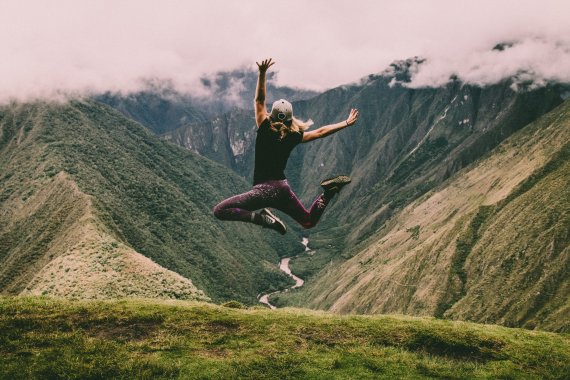No trail is too difficult for trail running: the ambitious runner works his way across any terrain, whether the ground is full of roots or scree, dust-dry, muddy, icy or rocky.
In addition to good fitness, the right shoes are the most important prerequisite - and at the same time a kind of outdoor health insurance. When buying the optimal trail running shoes, it is important to consider your own running type.
- Trail running shoes for beginners
- Trail running shoes for professionals
- Trail running shoes for competitions
- Trail running shoes for barefoot runners
If you are coming from jogging or running and want to try trail running as a trend sport for the first time, you can initially train with your usual running shoes without hesitation. If possible, these should sit firmly on the foot and have a pronounced profile, so that you do not slip away in rough terrain and risk injury.
When buying your first pair of trail running shoes, the following applies: Entry-level models should be sturdy but lightweight. Based on your personal running style, i.e. depending on how you place your foot and how you roll and bend your ankle, the salesperson can tell you which cushioning and stabilization your trail running shoe should have. For the test, either take your already well-used running shoes to the sports store or have a running style analysis done on the treadmill in the store / at the outdoor outfitter.
At purchase prices of 100 euros upwards for trail running shoes this effort is worthwhile. Then the salesperson will tell you something about the correct pronation and what the shoes should have. If you want to run in wind and weather, a Gore-Tex equipment is recommended. Then you are on the safe side.
If the pace becomes faster, sprints are added, the trails become longer and more extreme, the demands on trail running shoes increase. More robust, but still breathable materials are now in the foreground while keeping the weight as low as possible. Reinforced caps protect the toes and heels from injury.
The soles have significantly more grip due to cleats and wide heels and often also retrofittable spikes for the winter season. Gaiters provide additional protection against penetrating wetness or snow. Waterproof and windproof Gore-Tex materials are standard for this type of running anyway.

Those who specifically prepare for trail running events have to break in the shoes well on the one hand and on the other hand can optimally adapt them to the competition conditions and course conditions on site. The season plays a role here, as do the ground conditions, the distance to be covered and the differences in altitude.
In the run-up to the competition it can be clarified exactly whether the ground changes often or is predominantly sandy, earthy, rooty, stony or rocky. In addition, there are the possible weather influences: How does rain or snow change the track? All these factors have an effect on the choice of the optimal competition shoes, which must not be too small, weigh extremely little, be breathable and again (!): should be purchased and broken in well before the decisive race.
Runners who want to feel direct contact with the ground when trail running and appreciate the additional training effect for the muscles by walking barefoot will now find quite a few suitable models for themselves among the many models of trail running shoes.
These are very light outdoor running shoes with extremely flexible thin soles without heels and thus without a drop. The grippy material supports the ground adhesion, yet the natural rolling behavior is maintained. This not only strengthens the feet, but also the muscles of the entire musculoskeletal system.
 ISPO TextrendsISPO Textrends Whitepaper 2027/28
ISPO TextrendsISPO Textrends Whitepaper 2027/28
- ISPO awards
- Mountain sports
- Bike
- Design
- Retail
- Fitness
- Health
- ISPO Job Market
- ISPO Munich
- ISPO Shanghai
- Running
- Brands
- Sustainability
- Olympia
- OutDoor
- Promotion
- Sports Business
- ISPO Textrends
- Triathlon
- Water sports
- Winter sports
- eSports
- SportsTech
- OutDoor by ISPO
- Heroes
- Transformation
- Sport Fashion
- Urban Culture
- Challenges of a CEO
- Trade fairs
- Sports
- Find the Balance
- Product reviews
- Newsletter Exclusive Area
- Magazine






